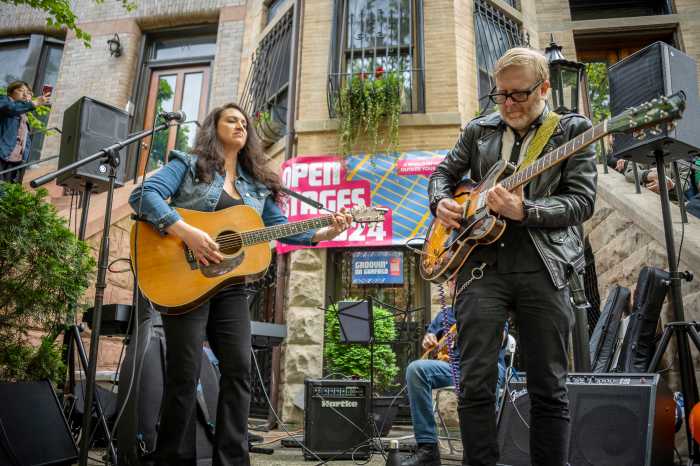This article was originally published on Bankrate.com.
As the job market cools down and inflation heats up, a new survey from Bankrate indicates that side hustles are a necessity for a growing number of Americans. Former top motivations for side hustling, like paying off debt and saving, have given way to a more pressing need: making ends meet.
Our recent side gig survey found that 41 percent of U.S. adults with a side job in 2022 need the extra income to pay for everyday living expenses, up from 31 percent when we last asked in 2019. Fewer are putting this money towards savings (17 percent vs. 24 percent in 2019) and using it for discretionary spending (26 percent vs. 36 percent in 2019).
“Unfortunately, due to high inflation and other financial burdens, more side hustlers are working a side job just to make ends meet,” says Ted Rossman, Senior Industry Analyst for Bankrate. “Instead of using this income to boost savings, knock out debt or pay for a vacation, there has been a big increase in people who simply use these funds to pay for everyday living expenses.”
Why Americans are side hustling in 2022
In 2019, we found that most side hustlers (36 percent) took on extra work for more spending money. In 2022, that number is down by 10 percentage points.
Unsurprisingly, inflation is partially to blame for these shifts. Thirty-seven percent of side hustlers are putting in extra time on these gigs due to inflation. Forty-eight percent are working about the same, and 16 percent say they’re working less.
Additional motivation findings
- Older millennials stand out — 53 percent of older millennials (age 33-41) who have side hustles need the extra money to pay for living expenses (compared with 41 percent of all side hustlers).
- Women are more likely to depend on side hustle income — 48 percent of women use most of their side hustle income for living expenses (compared with 33 percent of men)
- Also, men are about twice as likely as women to use their side hustle income for savings or debt payoff.
- Gen Z uses side hustle income for fun — At 42 percent, Gen Z side hustlers are the only generation to say they mostly use their side hustle money for disposable income.
- Many Republicans are side hustling to combat inflation — 47 percent of Republicans, 33 percent of Democrats, and 32 percent of independents are increasing their side hustle commitments due to high inflation.
Men are earning more with their side hustles in 2022
In addition to being less reliant on their side gig income, men are earning almost triple the average income compared to their female counterparts.
|
THE GENDER DIVIDE: SIDE HUSTLES |
|||
|
AVG. INCOME |
USING INCOME TO BOOST SAVINGS |
NEED INCOME FOR LIVING EXPENSES |
|
|
Men |
$1,492 |
22% |
33% |
|
Women |
$571 |
12% |
48% |
The median incomes for each group are much smaller but follow the same trend. For women, the median side gig monthly income is $250, and for men it was $500.
Side hustling is less common but more lucrative in 2022
Among all U.S. adults, 31 percent have a side hustle in 2022. How does this compare to historical numbers?
- 2017- 19 percent
- 2018- 37 percent
- 2019- 38 percent
Although many Americans report feeling the pressure of record-high inflation, one unexpected trend is that the number of side hustlers is down to 31 percent in 2022 from 38 percent in 2019. This decrease could be attributed to rising fuel prices which support popular gig economy jobs like ride-sharing and delivery services. Also, price increases for automobiles may cause would-be side hustlers to think twice about causing wear on their vehicles since replacing them could be more costly.
“I have to wonder if high gas prices and other inflationary pressures are making people question whether or not their side hustles are worth it,” Rossman says. “Driving people around and making deliveries has gotten really expensive, with gas approaching $5 per gallon nationally. Right now, the most lucrative side hustles are probably those that can be done from home. Even then, inflation could be an issue if you need to source materials for crafts or other activities.”
Despite this decrease in side hustle participation, the average and median income from side jobs is up since 2019. The average income for side gigs in 2022 is $996/month, while the median is $400. In 2019, the average monthly income was $839, and $150 was the monthly median income.
Young millennials work the most, but Baby Boomers earn the most
Millennials are most likely to have a side hustle (38 percent), followed by Gen Zers (34 percent) and Gen Xers (33 percent). Just 21 percent of baby boomers have a side hustle.
Young millennials (age 26-32) in particular stand out. According to the survey responses, 43 percent of young millennials report having a side hustle, the highest percentage of all age groups. The median side gig income for this group is $400 per month.
- The median monthly side gig income for older millennials is $250. For Gen Xers it’s $400, and for Gen Zers it’s $200.
While Baby Boomers are the least likely generation to earn income on the side, they seem to have the most lucrative side hustles. The median among boomers is $500 per month. It makes sense in the context of the skills they’ve acquired and the relationships they’ve built. Many of these boomers are probably engaging in high-paid consulting work that amounts to semi-retirement.
|
GENERATIONAL TRENDS: WHO’S EARNING? |
|||
|
% WORKING A SIDE JOB |
MEDIAN INCOME |
NEED INCOME FOR LIVING EXPENSES |
|
|
Gen Z (age 18-25) |
34% |
$200 |
32% |
|
Millennials (age 26-41) |
38% |
$400 |
46% |
|
Younger millennials (age 26-32) |
43% |
$400 |
39% |
|
Older millennials (age 33-41) |
34% |
$250 |
53% |
|
Gen X (age 42-57) |
33% |
$400 |
40% |
|
Baby Boomers (age 58-76) |
21% |
$500 |
40% |
Is side hustling really helping people get ahead?
Although it seems like inflation could possibly erode the gains you’d see from your side hustle income, it could still be worth the time and effort. “I had hoped to see more side hustlers in a position to save or pay down debt with these extra funds,” Rossman says. We think both of these activities are still possible in today’s economic environment, but managing those extra side hustle funds may take a little more conscious effort.
Methodology
This study was conducted for Bankrate by SSRS on its Opinion Panel Omnibus platform. The SSRS Opinion Panel Omnibus is a national, twice-per-month, probability-based survey. Data collection was conducted from May 20-23, 2022 among a sample of 1,000 respondents. The survey was conducted via web (n=970) and telephone (n=30) and administered in English. The margin of error for total respondents is +/-3.5 percentage points at the 95% confidence level. All SSRS Opinion Panel Omnibus data are weighted to represent the target population of U.S. adults ages 18 or older. Data collection for surveys fielded prior to 2022 was conducted entirely via RDD telephone.


































